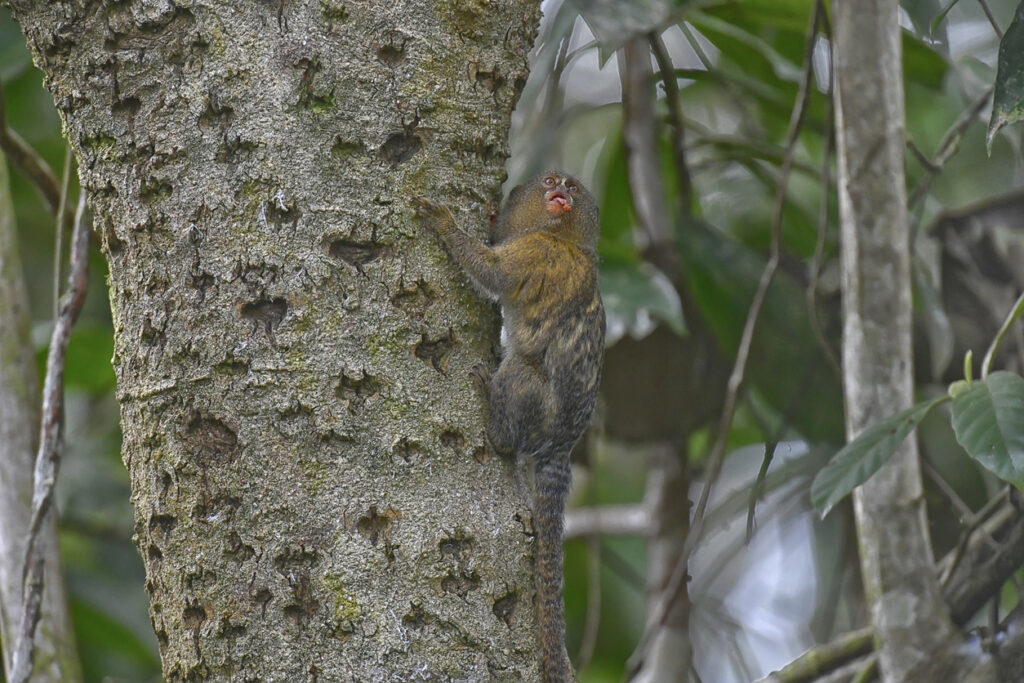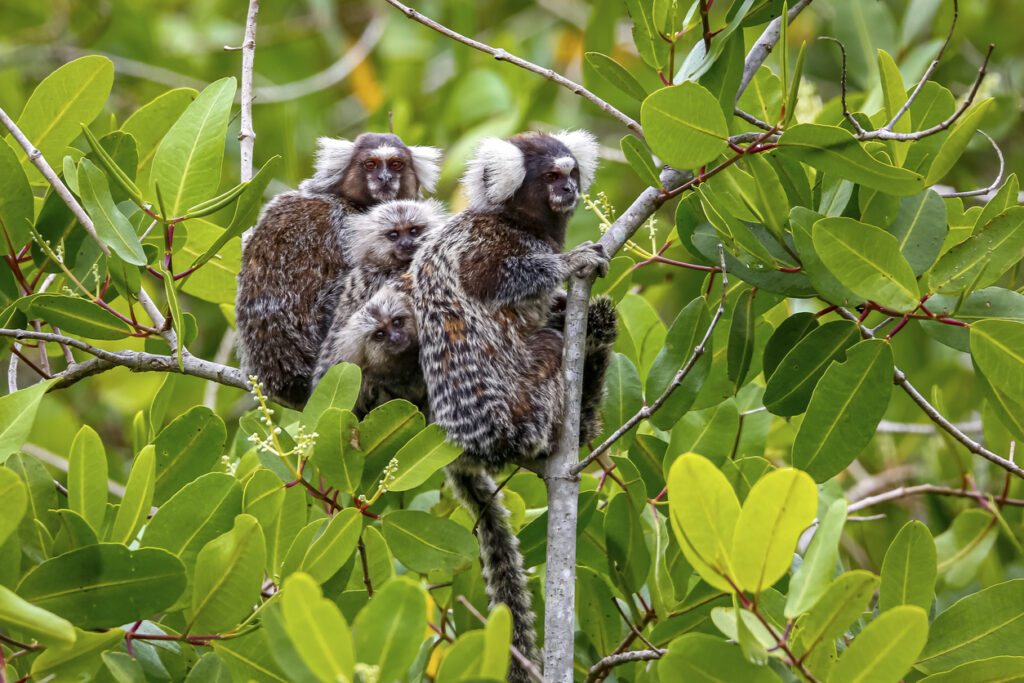Always up to mischief, our cute little marmosets are some of our visitors’ favourites here at Tynemouth Aquarium.
Let’s take a look at what makes these pint-sized primates so charming, as well as what they love to eat, where they live and where you can find them the next time you come by for a visit.
What is a marmoset?
A group of over 20 different monkeys found across the rainforests of Latin America, marmosets are small New World monkeys. By New World monkey, we mean the five families of primates that are found across the tropical regions of Mexico, Central America and South America.
What does the common marmoset look like?
Marmosets are very small, with an average adult body length of 14-19cm. In fact, they’re that small that many of them could easily fit into the palm of an adult human’s hand. The pygmy marmoset is the smallest, with a body length of just 12cm. What about the other end of the spectrum, how big does a marmoset monkey get? The Goeldii’s marmoset can answer that, coming in at a size of 21-23cm.
But what really makes the common marmoset stand out is the tufts of white hair sprouting from their ears, as well as their long-banded tail which they use to stay balanced when they move around their environments. The common marmoset also has a small white strip between their eyes, and a body that’s covered with mottled brown, green and yellow markings.
They also have claws on each of their fingers apart from their big toes, which have nails.
Where do common marmosets live?

The Pygmy marmosets are two species of small New World monkeys in the genus Cebuella. They are native to rainforests of the western Amazon Basin in South America which includes Peru. These primates are notable for being the smallest monkeys in the world, at just over 100 g (3.5 oz). In this photo you can see the holes in the tree where the monkey has been feeding on the tree gum.
The common marmoset is native to the scrub forest and drier Atlantic forest of north eastern Brazil, but many species also live in the rainforest surrounding the Amazon River.
The common marmoset’s diet: what do they eat?
Marmosets are omnivores, so they love to munch on all sorts of different food when they’re hungry, including insects, fruit, and other small animals such as frogs, snails and lizards. They also have a real soft spot for the gum and sap produced from trees, using their lower incisors to puncture them so that gum can flow out. Yum!
How do common marmosets behave?
Highly sociable creatures, common marmosets can usually be found hanging around in groups of 8 to 10 of their friends. They’re most active during the day, and since they’re arboreal, they spend most of their lives high up in trees. When the sun goes down and night rolls in, they’ll take shelter inside tree holes to shield themselves from bad weather or worse: bigger predators looking for their next snack!
They often communicate with high-pitched chirps and facial expressions, which actually sound a little like birds, but they display their emotions with eyelid movements and ear twitches. If they’re looking for a mate, they’ll use a mating call that’s drastically different from the rest of the noises they usually make.
In the large social groups we mentioned early, it’s only the head male and female of this group that will have babies. All the other members of the group are simply part of this big family, though they’ll pitch in with caring for the young, foraging for food and sleeping nearby to protect them.
Where does the name marmoset come from?

Their name actually refers to their tiny size, being derived from the French word marmouset which means “dwarf” or “little”. Their scientific name Callithrix jacchus has its own origins and meaning too. Jacchus comes from the Latin word lacchus, which refers to Bacchus, the Roman god of agriculture, wine and fertility. Callithrix, meanwhile, comes from the Greek words kallos and thrix, which when put together actually means “beautiful hair” – a name that definitely makes sense given their soft and silky manes!
Where can marmosets be found at Tynemouth Aquarium?
Along with the Giant Pacu, red-footed tortoise and lots more, you can find our common marmosets at our Amazing Amazon exhibit.
Fun facts about the common marmoset
- Marmosets usually give birth to twins, which rarely happens in other primate species, who tend to only give birth to one baby at a time
- Female marmosets have fantastic eyesight. In fact, they can see colour the exact same we do. Male marmosets aren’t quite as lucky, and can end up suffering from colour blindness, confusing greens, browns, orange and red
- Unlike some other New World monkeys like Spider monkeys, marmosets can’t use their tails to grasp onto things as their tail is not prehensile.
- Their big toes and thumbs are not opposable – this means neither can move on their own with their other fingers moving too
- Other marmoset species aren’t as interested in feeding on gum and sap as common ones are, so there’s little competition for food. Handy when it’s feeding time!
- The noises and calls that common marmosets make are sometimes so high pitched that humans can’t actually hear them
Enjoyed learning all about the common marmoset? Why not see them for yourself by booking a visit to Tynemouth Aquarium? You can find all the info you need to know ahead of your visit by heading here.
